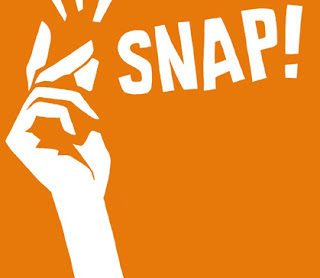Snappy adaptions for Fine-motor control and Myasthenia Gravis
The finer things in life
Many tasks that we need to do involve intricate movements of our fingers. Our fingers are controlled by 34 muscles originating in our forearms and palms. These muscles connect to our finger bones by tendons. The fingers actually have no muscles in them! With 34 muscles needed, it’s no wonder that controlling fine motor movements can become an issue when diagnosed with Myasthenia Gravis.
Tips when suffering from fine motor impairment:
· Avoid extended use of these muscles and plan ahead
When I write, I notice that my handwriting can start out relatively neatly, but then goes downhill into a scrawl. By limiting the use of these muscles, you can preserve them for the things you need. If you know you are going to need your fine skills for a task make sure you doing it your 'strong' times. For some, this is in the morning and for others about an hour after they have had their Mestinon.
· At work implement an ergonomic workstation design
Because the muscles are in your palm and forearm having an ergonomic workstation reduces the strain on affected muscles and minimises the movements required.
Arm supports at a workstation and the correct height of your desk can make a huge difference in reducing strain.
Including alternative computer and telephone access at work can be part of this.
 |
| http://absn.tk/ergonomic-workstation-setup/ |
· The smaller something is the more difficult it can be to hold or move.
There are great writing and grip aids that you can buy and slip over your pen or fork. Alternatively, you can get small foam insulation and tape it to your cutlery.
· For phones
Those tiny buttons on a smartphone screen can make your texts come out into a jumble! Try a stylist to type more effectively. You can use voice to text devices to type for you if you are able to speak clearly. Save contacts regularly used on your front screen of your phone, therefore only requiring on click to call or message.
· When reading
Consider using a page turner or book holder to ease the tension in your muscles. See my earlier post (adaptions for leisure reading) about minimising muscle strain when reading.
Do you have any other great ideas that can be used?







Oooo would really like to find that thing for when reading! That is always a problem when reading funnily enough - forever getting little cramps when holding the book and pages open!
ReplyDeleteJessica | growchangeaccept.co.uk
They are called thumb things! Cute name hey!
DeleteThese are really good tips and this was a very interesting read!
ReplyDeleteGlad you enjoyed it! Hope it can help!
DeleteReally interesting post! Such detailed and varied advice, I'm sure this will help loads of people xx
ReplyDeletetheassortedwriter.blogspot.co.uk
Thanks. It's all about spreading awarness and helping others. Thanks for the kind words.
DeleteThe Myasthenia Gravis reaches its extreme severity when the person affected is not resting because it doesn’t cause any harm when a person is at rest... http://www.naturalherbsclinic.com/what-is-myasthenia-gravis
ReplyDeleteI see in your link you also note "In case it gets worsened it can be brought back to normal by taking proper rest" This is unfortunately not always the case especially if the person is in crisis. Breathing is affected even at rest.
DeleteI started on COPD Herbal treatment from Ultimate Life Clinic, the treatment worked incredibly for my lungs condition. I used the herbal treatment for almost 4 months, it reversed my COPD. My severe shortness of breath, dry cough, chest tightness gradually disappeared. Reach Ultimate Life Clinic via their website at www.ultimatelifeclinic.com . I can breath much better and It feels comfortable!
ReplyDeleteI was diagnosed with Parkinson’s disease four years ago. After relying on medications with little relief, I turned to NaturePath Herbal Clinic out of hope. Within months, I noticed real improvements tremors subsided, balance improved, and my energy returned. It’s truly been life-changing.
ReplyDeleteIf you or a loved one is facing Parkinson’s, I highly recommend exploring their natural approach.Visit: www.naturepathherbalclinic.com | Email: info@naturepathherbalclinic.com